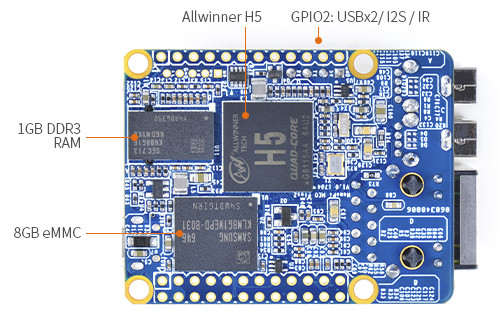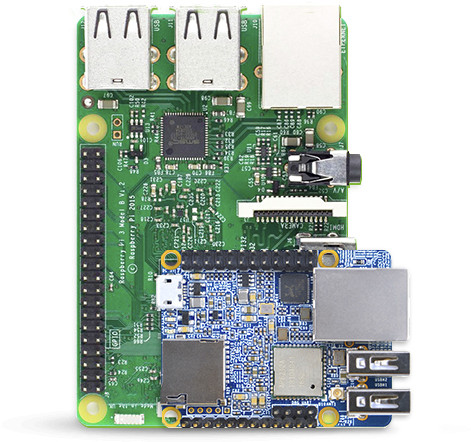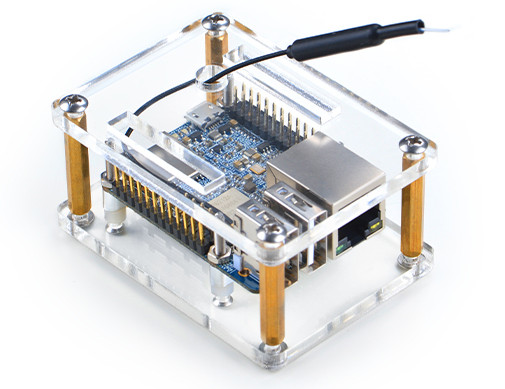NanoPi NEO 2 board has just got an update with NEO Plus2 board featuring the same Allwinner H5 processor and Gigabit Ethernet connectivity, but FriendlyELEC updated the RAM from 512MB to 1GB, added an 8GB eMMC flash, a WiFi & Bluetooth module, and an extra USB port.
NanoPi NEO Plus2 specifications:
- SoC – Allwinner H5 quad core Cortex A53 processor with an ARM Mali-450MP GPU
- System Memory – 1 GB DDR3
- Storage – 8GB eMMC flash (Samsung KLM8G1WEPD-B031) + micro SD card slot
- Connectivity – Gigabit Ethernet (via RTL8211E-VB-CG chip), 802.11 b/g/n WiFi and Bluetooth 4.0 (via Ampak AP6212A wireless module)
- USB – 2x USB 2.0 host ports, 1x micro USB port (for power only), 2x USB via headers
- Expansion headers
- 24-pin header with I2C, 2x UART, SPI, and GPIOs
- 12-pin header with 2x USB, IR pin, I2S, and GPIOs
- 5-pin audio 2.0mm pitch header with microphone and LINE out signals
- Debugging – 4-pin header for serial console
- Misc – Power and status LEDs
- Power Supply – 5V via micro USB port or VDD pin on headers.
- Dimensions – 52 x 40 mm
The header pinout and spacing appear to be identical to the ones of other NanoPi NEO boards, so accessories like NanoHat Hub and BakeBit Starter Kit should work with the board, but with the extra features, they also had to make the board a little longer, so enclosures like NanoPi NAS Kit won’t be compatible. They’ve used the cheapest 8GB Samsung eMMC flash with 5K/0.6K R/W IOPS, so don’t expect the best performance from it, but it may or may not matter that much depending on your application.
 The company has still released Ubuntu Core 16, Debian NAS (with OpenMediaVault), and Ubuntu OLED images based on Linux 4.x for the board, which you’ll find together with the rest of the documentation in the dedicated Wiki. eFlasher tool will allow you to install the image to the internal eMMC flash. An experimental Armbian image is also likely to be released soon enough.
The company has still released Ubuntu Core 16, Debian NAS (with OpenMediaVault), and Ubuntu OLED images based on Linux 4.x for the board, which you’ll find together with the rest of the documentation in the dedicated Wiki. eFlasher tool will allow you to install the image to the internal eMMC flash. An experimental Armbian image is also likely to be released soon enough.
NanoPi NEO Plus2 is sold for $24.99 plus shipping apparently with all 2.54mm pitch headers soldered by default, a WiFi antenna, and a user manual. You may however prefer to purchase the “basic kit” for $29.00, which adds a micro USB cable, a heatsink & thermal pad, an acrylic case, and – for the first 200 orders – a USB2UART board for debugging.

Jean-Luc started CNX Software in 2010 as a part-time endeavor, before quitting his job as a software engineering manager, and starting to write daily news, and reviews full time later in 2011.
Support CNX Software! Donate via cryptocurrencies, become a Patron on Patreon, or purchase goods on Amazon or Aliexpress







